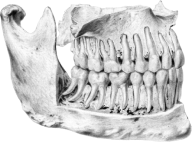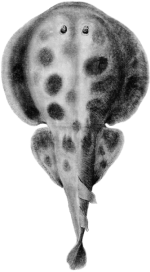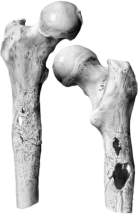
Prototype Hopkins Endoscope, 1961
Accessibility
The Royal College of Surgeons of England strives to reduce any barriers to coming and enjoying a visit to the Hunterian Museum and associated events.
Feedback and suggestions on ways to improve are welcome from all visitors.
Additional information is available on the Royal College of Surgeons of England AccessAble Access Guide.
Step-free access
All floors of the building have step-free access. There is a ramp at the Lincoln’s Inn Fields entrance and a self-operated platform lift at the Portugal Street entrance.
Toilets and changing facilities
Toilets are on the ground floor, to the left as you enter from Lincoln’s Inn Fields.
The main toilets are gender neutral and are individually self contained with a toilet and sink in each cubical.
There is an accessible toilet and separate baby changing facilities.
The building does not have a Changing Places toilet.
Read more about Change Places toilets.
The nearest one can be found by searching here, using postcode WC2A 3PE. Currently the nearest facilities open to the public are at Great Ormond Hospital (0.7 miles) and Wellcome Collection, Euston Road (1.3 miles).
Lockers
Lockers are available on a first come, first served basis. Backpacks, rucksacks and suitcases are not allowed in the Museum and must be stored in a locker.
Sizes h x w x d
69.5 × 31.5 × 62.5 cm
64.5 × 28.5 × 45.5 cm
47.5 × 29 × 46 cm
Assistance dogs
Assistance dogs are welcome. Other animals are not permitted.
Wheelchair users
Royal College of Surgeons of England is a wheelchair-accessible building. A wheelchair can be made available for your visit on a first come first served basis.
Inside the museum space the narrowest door way is 91cm in width.
Seating in the Museum
There are five benches with arm supports located throughout the Museum. In addition there are seats at some AV displays. There are also mobile foldable stools available in the Museum.
Seating in other parts of building
There are benches without arms or backs at the Museum exit in the foyer area from Lincoln’s Inn Fields.
There is a large low-level leather sofa in the ground floor atrium.
There is a bench with back and arms in recess to the right of lifts on the first floor.
Queues
If queuing is difficult for you, please let a member of staff at the reception desk know.
Blue Badge parking
There is no disabled parking on-site. There are Blue Badge parking bays close by on Lincoln's Inn Fields and Portugal Street. Blue Badge’s London map has more information.
Visual access
Magnifying glasses or magnifying sheets are available for loan from the reception desk.
A Hunterian Museum App with full text and audio descriptions is available to download.
Audio visuals with spoken word have subtitles or explanatory text.
Large text guides are currently being prepared and will be available soon.
Induction loops
There is a countertop induction loop at the Museum reception desk and in spaces where Museum events are held.
Access tours and events
There are regular tours of the Hunterian Museum for visitors with specific access needs, including live audio description and British Sign Language interpreted tours. Speech to text will be available at many talks. Please check the Hunterian Museum website for details.
BSL video tour
A British Sign Language tour is available on the museum's free digital guide.
Alternatively it can be viewed in full online.
Museum displays access and sensory information
Descriptions of displays in each room and map
All Rooms:
There is no natural daylight in the Museum. Light levels are low, circa 200 lux. This is necessary to conserve the specimens and fragile objects.
There are five benches in the Museum in Rooms 1, 5, 6 and 7
There are foldable carry stools on stands in Room 1, 2 and 10
There are two round surgical stools with lockable wheels at the AVs in Room 10
Room 1
Audio visual projection from above showing anatomical figures form 1300s-1700s. Images change every 20 seconds, gentle swish sound as images and text labels come on to a leave the table.
Small book in left hand corner activated by hovering hand over arrows on table. Occasional gentle sound of turning page.
Tactile exhibit of one of the four anatomical tables displayed to the right hand side. This one depicts the veins. Braillie lettering about the Tables and the parts of the body depicted. Exhibit protrudes from wall like a small desk, height 70cm.
Room 2
Ambient animal sounds: bees, frogs, birds, cows, sheep and occasional roar of a cheetah.
Room 3
Audio visual projection from above of conversation between John Hunter and his brother William. Scottish voices. Some quiet background sounds of street scenes and artists pen/brush. Presented in 5 small ‘chapters’ each one highlighting a particular place or specimen. Words of conversation are written on left hand side of page and move upwards over the screen. Height of display table 70cm, leg room beneath.
Room 4
Room 4 is a 22m gallery showing as much of the original collection of John Hunter as is possible within the restricted space of the Museum. The specimens were prepared between 1760 and 1793. To display as many as possible some are displayed above eye level. To make the display as authentic as possible Hunter’s original order for the specimens has been followed. As a result about 15% of the extended labels are displayed on the bottom shelf, especially in the area of human pathology, as they appear in Hunter’s series. This arrangement, to maximise the display of specimens while accepting the compromises for interpretation and access, was discussed and agreed with an external access group and other access advisors in the process of making the museum.
The entire Hunter collection, including all specimens on display, has been digitised and is available to search via two databases/AVs in the Room
- Two search collection terminals both with same content. One on left hand side as you enter from Room 3, height 70 cm leg room beneath, the other half way down gallery on right hand side, height 40cm leg room beneath. No sound.
- One short video film showing how specimens are conserved
- Entire Hunter collection (3,100) specimens searchable by name or number. Back and front photograph of each specimen which on tapping shows image magnified x20.
- A2m high monitor at end of gallery shows revolving specimens magnified x 100. Each specimen on screen for 1minute 15 seconds. Transitions to black in between each filmed specimen.
Room 5
Ambient animal sounds: bees, frogs, birds, cows, sheep and occasional roar of a leopard.
Hunters House model with recorded sound voice of actress/Hunter’s housekeeper showing two visitors through Hunter’s House running time c.4 minutes. Some background Foley sounds: footsteps, doors closing, muffled voices etc.
Full script on Hunterian Museum App
Hunter’s London Audio visual. Gentle sounds of street scenes. Touch screen interactive with pop up figures associated with John Hunter. 13 locations in centre of London marked.
Room 7
Hunter’s case books. Audio Visual Projection form above. Turning pages activated by hand being waved above the arrows. Slight sound of page being turned, deep ‘beep’ sound when page is about to turn/indicating activation of next page.
Table at 70cm – desk like space underneath
Room 8 - Currently Closed
Audio visual projection from above showing anatomical figures from 1800s. Images change every 20 seconds, gentle swish sound as images and text labels come on to and leave the table. Occasional turning page of book sound
Audio visual of images of microscope specimens. Selection activated by waving hand above arrows/pulsating slide specimens. No sound
Room 9
Audio visual touch screen searchable database of paintings and archival material related to facial reconstruction objects displayed in the case to the left hand side. Includes all 70 pastel portraits by Henry Tonks in RCSEng collections. Each one can be magnified to x 6. Limited audio – sound of turning pages only. Table top 70cm high leg room underneath. Mobile ‘surgeon’s stool’ available for use. Roller wheels lock on sitting.
Audio visual large monitor in centre of room showing contemporary imaging of the human body. Activated by touching screen at prompt points. No sound.
Audio visual touch screen selection of short films about surgery from 1917 to the present day. Scroll right to left through selection. Subtitles and sound on all.
Table top 70cm high leg room underneath. Mobile ‘surgeon’s stool’ available for use. Roller wheels lock on sitting
Room 10
Totally darkened room except for audio visuals playing. Cinema style feel.
Large screen projection onto wall facing you on entry showing surgical operation speeded up. Play time 10 minutes. No sound. Figures appear blurred.
Left hand side monitor of short filmed interviews with patients and their surgeons describing their shared personal experience of surgery. Each film ‘couplet’ is about 5 minutes long, total running time 58 minutes. Sound of voices, ratchet sound of film case revolving indicating selection before each pair of interviews. All films are subtitled. Films also available on line on Hunterian Museum website.
Shop
Some daylight
Desk height 70cm. tap payment facilities on desk.
A4 sign in front of desk monitor with QR code to visitor comments/feedback on line form
Exit door
Assisted door activated via push button on right hand side towards exit, directly below credit board for Museum.
Donation point
Tap and donate terminal outside exit 70cm height, comments book to left hand side
Plan your visit
-

-

-

Digital Guide
Explore the displays and discover exhibition highlights with the Hunterian Museum's free digital guide.
-



